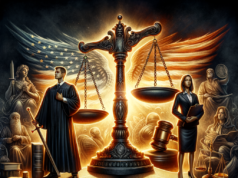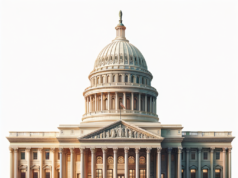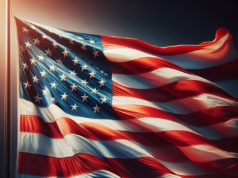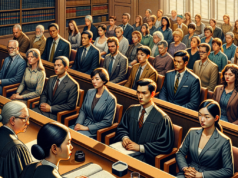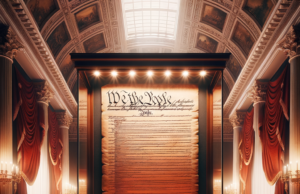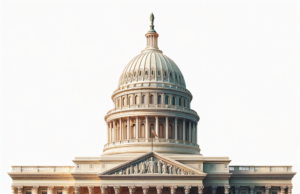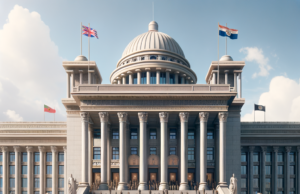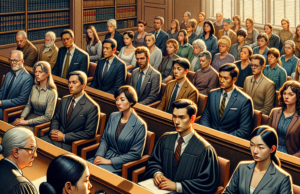Contents
- 1 Understanding the Current Landscape of Firearm Regulations in the United States
- 2 Analyzing the Historical Context of Firearm Legislation and Its Evolution
- 3 The Societal Impacts of Stricter Gun Control Measures on Communities
- 4 Examining the Correlation Between Firearm Regulations and Crime Rates
- 5 The Role of Advocacy Groups in Shaping Firearm Policy and Public Opinion
- 6 Future Implications: What Lies Ahead for Firearm Regulations and Society
In recent years, the debate surrounding firearm regulations in the United States has intensified, drawing attention from policymakers, advocacy groups, and the public alike. As mass shootings and gun-related violence continue to plague communities, the call for stricter gun control measures has become increasingly urgent. This article aims to unveil the truth behind the current landscape of firearm regulations, examining their historical context, societal impacts, and the role of advocacy groups in shaping public opinion. Furthermore, it will explore the correlation between firearm regulations and crime rates, providing insights into what the future may hold for firearm policy in America.
Understanding the Current Landscape of Firearm Regulations in the United States
The current landscape of firearm regulations in the United States is characterized by a patchwork of laws that vary significantly from state to state. While some states have enacted stringent measures, including background checks, waiting periods, and restrictions on certain types of firearms, others maintain more permissive laws that prioritize individual gun ownership rights. The Second Amendment of the U.S. Constitution serves as a foundational element in this debate, often cited by advocates for gun rights who argue against any form of regulation. In contrast, gun control proponents emphasize the need for comprehensive legislation to address the rising incidence of gun violence and mass shootings. As of 2023, the ongoing discourse surrounding these regulations reflects deep societal divisions, with public opinion often swaying in response to high-profile incidents of gun violence.
Analyzing the Historical Context of Firearm Legislation and Its Evolution
To understand the current state of firearm regulations, it is essential to analyze the historical context of firearm legislation in the United States. The roots of gun control can be traced back to the early 20th century, with the passage of the National Firearms Act of 1934, which aimed to regulate machine guns and sawed-off shotguns in response to organized crime. Subsequent legislation, including the Gun Control Act of 1968, sought to address the growing concerns over gun violence and the need for federal oversight. Over the decades, landmark Supreme Court cases, such as District of Columbia v. Heller (2008), have further shaped the legal framework surrounding gun ownership, affirming an individual’s right to possess firearms for self-defense. This historical evolution reveals a complex interplay between societal fears, political agendas, and the persistent struggle to balance individual rights with public safety.
The Societal Impacts of Stricter Gun Control Measures on Communities
Stricter gun control measures have profound societal impacts on communities, influencing not only crime rates but also the overall perception of safety among residents. In areas where stringent regulations have been implemented, proponents argue that there is a noticeable decrease in gun-related incidents, fostering a sense of security and community well-being. However, critics contend that such measures can lead to unintended consequences, including the potential for increased criminal activity as law-abiding citizens are disarmed. Additionally, the psychological effects of living in a community with high levels of gun violence can lead to increased anxiety and fear, further complicating the social fabric. Ultimately, the societal impacts of firearm regulations are multifaceted, requiring a nuanced understanding of both the benefits and drawbacks of such policies.
Examining the Correlation Between Firearm Regulations and Crime Rates
The correlation between firearm regulations and crime rates remains a contentious topic among researchers and policymakers. Some studies suggest that states with stricter gun laws experience lower rates of gun violence, attributing this trend to the reduction of firearms in circulation and the enhanced screening of potential gun buyers. Conversely, other research indicates that crime rates are influenced by a myriad of factors beyond gun legislation, including socioeconomic conditions, law enforcement practices, and cultural attitudes toward violence. This complexity underscores the challenge of establishing a direct causal relationship between firearm regulations and crime rates, as the interplay of various elements can obscure clear conclusions. As the debate continues, it is imperative for policymakers to consider a comprehensive approach that addresses the root causes of violence while also evaluating the effectiveness of existing regulations.
The Role of Advocacy Groups in Shaping Firearm Policy and Public Opinion
Advocacy groups play a pivotal role in shaping firearm policy and influencing public opinion on gun control issues. Organizations such as the National Rifle Association (NRA) and Everytown for Gun Safety have emerged as powerful entities, each representing opposing viewpoints in the ongoing debate. The NRA has historically championed the rights of gun owners, mobilizing its members to oppose restrictive legislation and promote the idea of personal responsibility in firearm ownership. In contrast, groups like Everytown advocate for comprehensive gun reform, focusing on measures such as universal background checks and assault weapon bans. These organizations utilize various strategies, including grassroots campaigns, lobbying efforts, and public awareness initiatives, to sway public sentiment and impact legislative outcomes. As the discourse surrounding firearm regulations evolves, the influence of advocacy groups remains a critical factor in determining the future of gun policy in the United States.
Future Implications: What Lies Ahead for Firearm Regulations and Society
Looking ahead, the future of firearm regulations in the United States is fraught with uncertainty, shaped by ongoing societal debates, political dynamics, and evolving public perceptions. As incidents of gun violence continue to capture national attention, the pressure on lawmakers to enact meaningful reforms is likely to intensify. However, the deeply entrenched cultural attitudes toward gun ownership and the Second Amendment present significant barriers to achieving consensus. Moreover, the rise of technology, including the proliferation of ghost guns and online firearm sales, adds new dimensions to the regulatory landscape, necessitating adaptive and forward-thinking approaches. Ultimately, the trajectory of firearm regulations will depend on the ability of stakeholders—policymakers, advocacy groups, and the public—to engage in constructive dialogue and work collaboratively toward solutions that prioritize both individual rights and community safety.
In conclusion, the alarming impact of firearm regulations today reflects a complex interplay of historical context, societal implications, and advocacy efforts. As the United States grapples with the persistent challenges of gun violence and public safety, the future of firearm regulations remains uncertain. It is imperative for all stakeholders to engage in informed discussions that consider the multifaceted nature of this issue, striving for policies that not only respect individual rights but also promote the well-being of communities across the nation. The path forward will require a commitment to understanding the nuances of firearm legislation and its profound effects on society, ultimately shaping a safer future for all.




